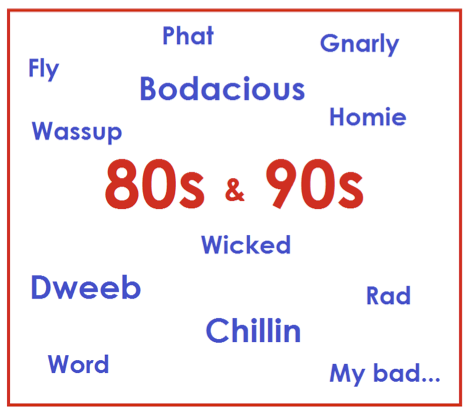
13 Sep Are you the cat’s pyjamas or a groovy kind of person?
Many of us watch 80s films and think to ourselves – “We really spoke like THAT?”
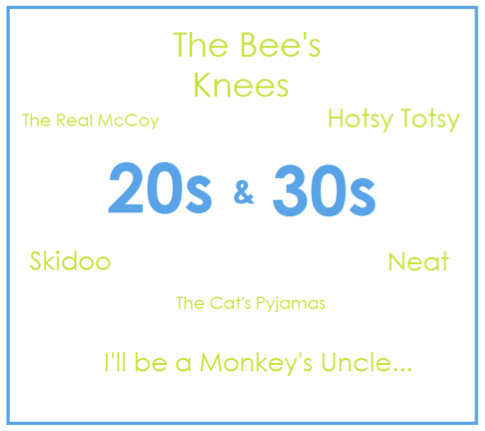 Yes. Yes we did. But that is the beauty of language; one day everyone will be saying words like ‘cool beans’ and the next thing you know the beans will be anything BUT cool.
Yes. Yes we did. But that is the beauty of language; one day everyone will be saying words like ‘cool beans’ and the next thing you know the beans will be anything BUT cool.
So, how can this be? How can the ‘coolness’ of a word, even the meaning, change so dramatically over a smattering of years? Well, it’s all about trend. Just as clothes go in and out of fashion, so too does language. Don’t believe me? In recent years words such as ‘Sweet’, ‘Cool’, ‘Fab’ and ‘Man’ have all been popular word choices by the majority of people, yet all were once popular in the 40s, 50s and 60s. It’s the circle of life. Well, not really, but it is certainly the circle of language, in that words rarely leave a language entirely, they just adapt to changes in society.
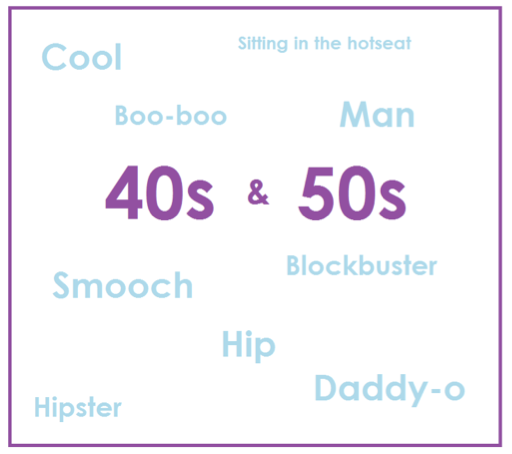
So let’s look at a few favourites. In the 1920s and 30s, it seems that animals were a prevalent theme in phrases that denoted excitement, or even exasperation.
- The Cat’s Pyjamas
- The Bees’ Knees
- I’ll be a Monkey’s uncle
This prevalence denotes not only a trend, but also a reflection of society at that time.Nowadays, language that is considered more crude is more commonly usedto express delight (e.g. Sick), whereas back in the 1920s language was far more restrictive. Certain words were drenched in taboo – swearing was more of a societal rebellion rather than an expression of emotion.
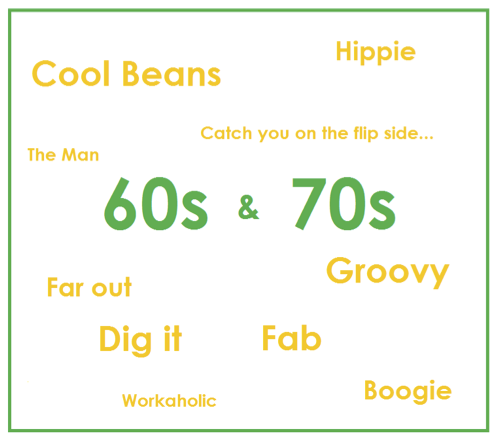
Fast forward to the 60s and 70s where words that may make you cringe nowadays were extremely popular, as witnessed by TV shows such as The Brady Bunch. ‘Groovy’ is one of the words that sticks out the most and even lasted until the 80s. Unfortunately, the adjective underwent a monumental change in the 90s that gave it the stigma of being ‘uncool’, a label that still hasn’t diminished in any
way twenty years later. It seems as if the cynicism of the 90s replaced the idealism of the 70s and 80s, and this was reflected in the language used. Those who were avid users of words like ‘Groovy’, ‘Bodacious’, ‘Fly’ and ‘Rad’, became almost embarrassed by the language which had idealistic connotations of the hippie freedom-focused society of the previous decades.
To the 90s then, when language suddenly had more freedom to grow and expand. More facets of society branched out, and with new groups came more language trends, and with more language trends came more words like ‘Phat’ and ‘Word’. (See! It’s not just the 80s that can be embarrassed about what terms were popular…).

With the development of the internet and the rise of social media, the ability to coin new words became more and more accessible in the noughties, which brings us to today. The addition and creation of neologisms has become common-practice with words such as ‘Selfie’ ‘Twerk’ and ‘Dench’ thriving, purely due to the power of social media.
So how do you keep track of what’s cool and what’s not? How do you know when a word has outlived its‘coolness’? Well, you don’t. Unfortunately, all you can do is ride the wave and pick up here and there new terms that are slipping into the language. Maybe listen to Radio 1 and watch TOWIE from time to time…
What terms can you remember that we’ve missed?



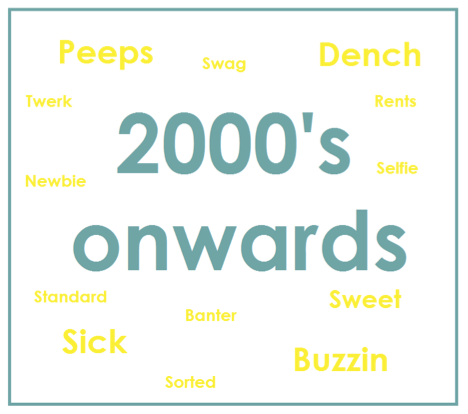
Sorry, the comment form is closed at this time.